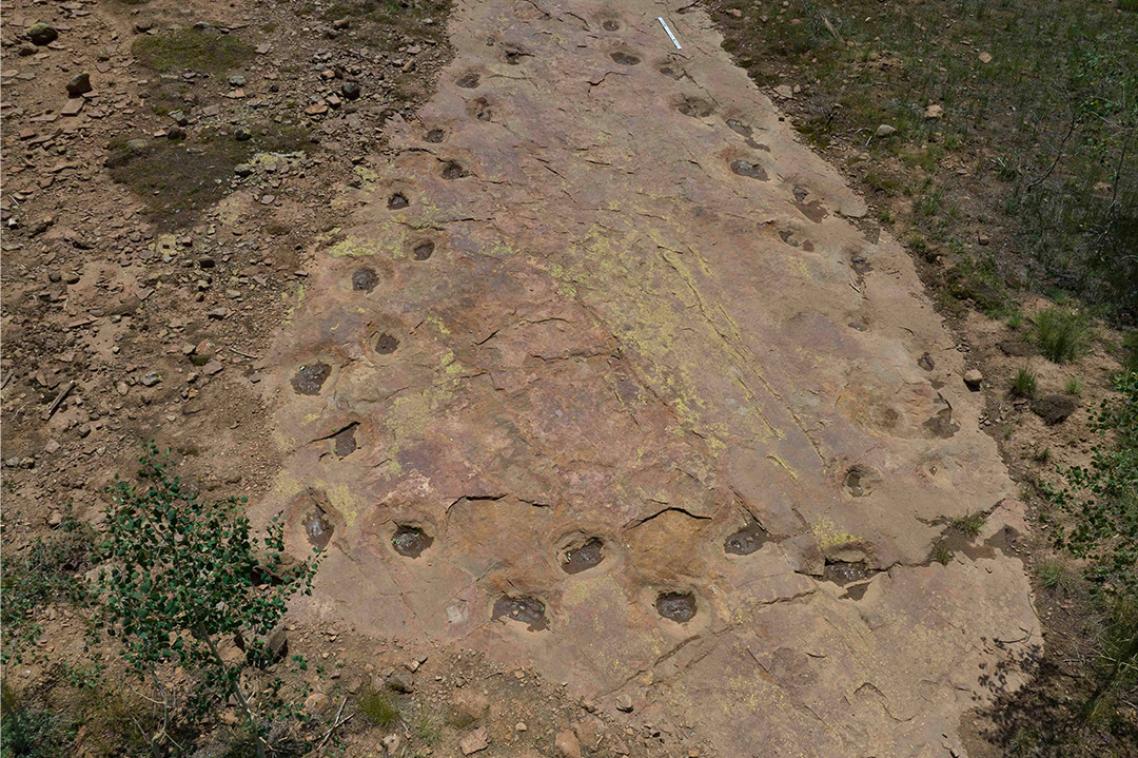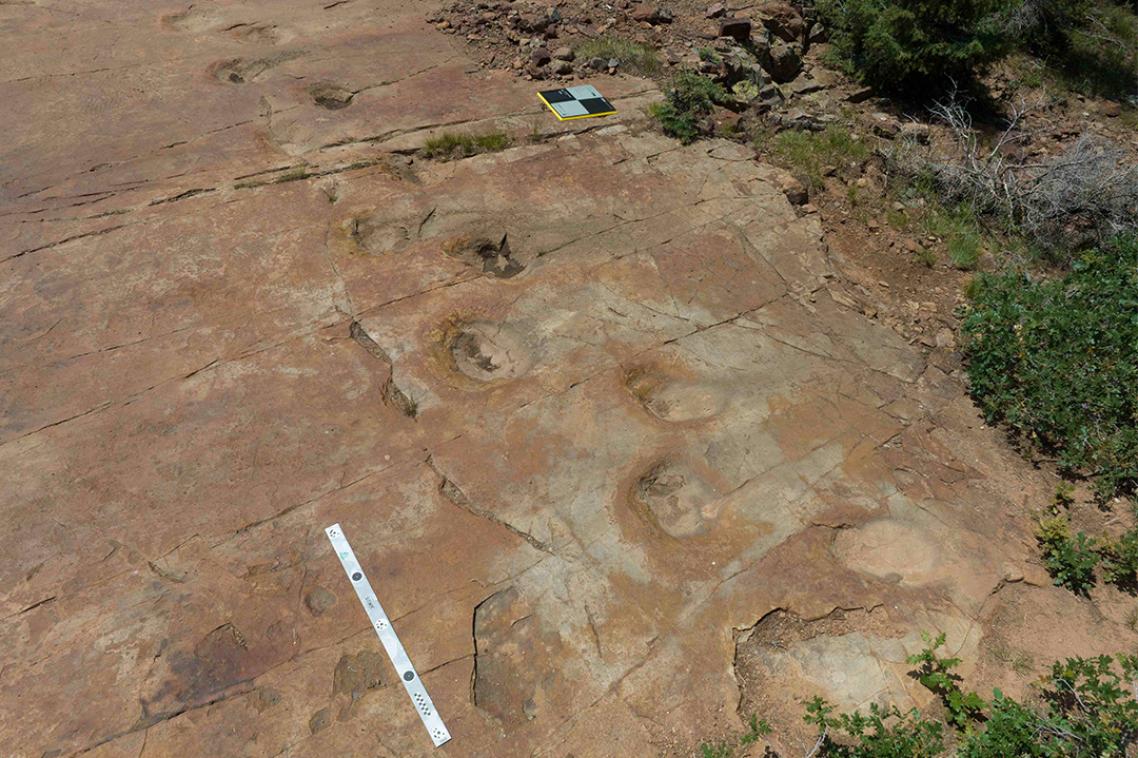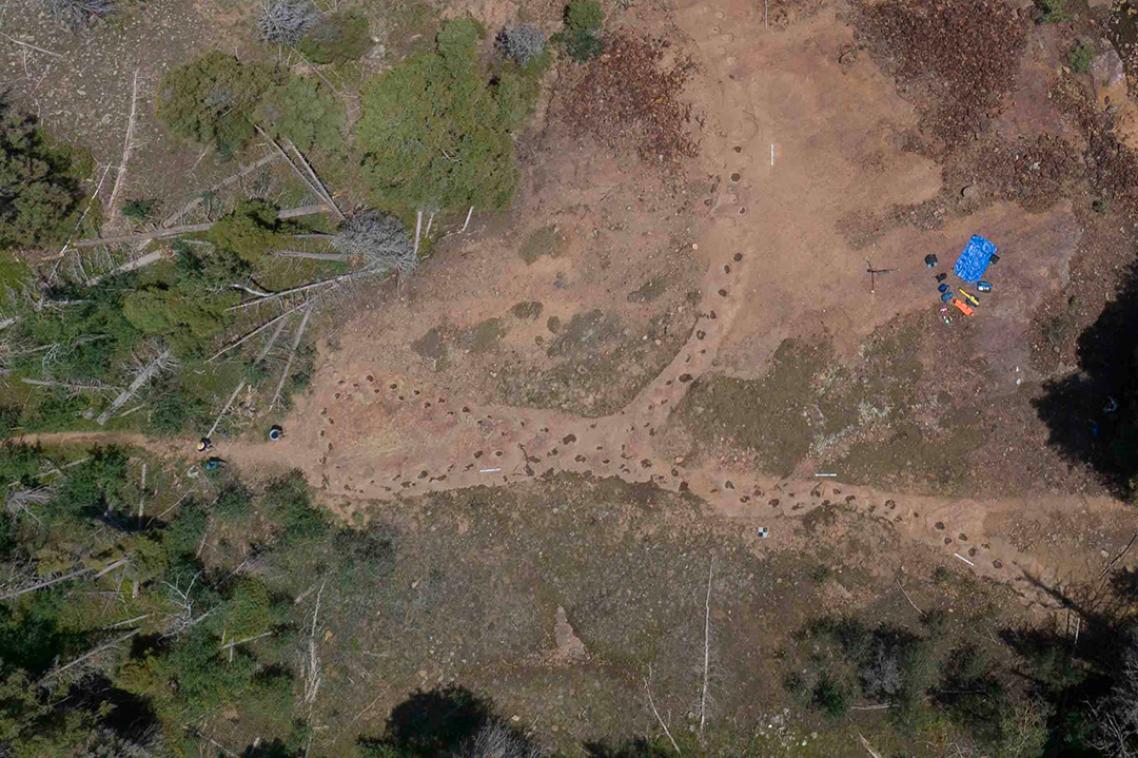Looping long-necked dinosaur site reveals its secrets

An aerial view of the loop section of the West Gold Hill Dinosaur Tracksite in Colorado.
(Photo credit: Dr Paul Murphey )
An analysis of a unique looping trail of ancient footprints in the United States reveals the dinosaur which made it may have been limping.
The site near Ouray in Colorado is one of the most continuous and tightly turning sauropod trackways ever documented.
Dr Anthony Romilio from The University of Queensland’s Dinosaur Lab analysed more than 130 footprints along the 95.5-metre track made 150 million years ago.
“This was left in the Late Jurassic when long-necked dinosaurs such as Diplodocus and Camarasaurus roamed North America,” Dr Romilio said.
“This trackway is unique because it is a complete loop.
“While we may never know why this dinosaur curved back on itself, the trackway preserves an extremely rare chance to study how a giant sauropod handled a tight, looping turn before resuming its original direction of travel.”
Co-author Dr Paul Murphey from San Diego Natural History Museum said the scale of the West Gold Hill Dinosaur Tracksite required a new approach.
“It has been challenging to document these footprints from the ground because of the size of the trackway,” Dr Murphey said.
“We used drones to capture the entire trackway in high resolution.
“With these images we generated a detailed 3D model, which could then be digitally analysed in the lab at millimetre-scale accuracy.”

Overhead views of the 130-plus fossil footprints, shown as (A) a stitched photographic model and (B) as a false-colour height map, where changes in elevation highlight the footprints by their depth. The arrows indicate the dinosaur’s turning path as it walked across the site.
(Photo credit: Dr Anthony Romilio)
The virtual model reconstructed the sauropod’s movement along the full trackway.
“It was clear from the start that this animal began walking toward the northeast, completed a full loop, and then finished facing the same direction again,” Dr Romilio said.
“Within that loop we found subtle, yet consistent, clues to its behaviour.
“One of the clearest patterns was a variation in the width between left and right footprints, shifting from quite narrow to distinctly wide.
“This shift from narrow to wide step placement shows that footprint width can change naturally as a dinosaur moves, meaning short trackway segments with seemingly consistent widths may give a misleading picture of its usual walking style.
“We also detected a small but persistent difference in left and right step lengths, of about 10 centimetres or 4 inches.
“Whether that reflects a limp or simply a preference for one side is hard to say.
“There are many long dinosaur trackways around the world where this method could be applied to extract behavioural information that was previously inaccessible.”
The investigation of the track site has been supported by U.S. Forest Service.
The research is published in Geomatics.

Footprints which make up the West Gold Hill Dinosaur Tracksite.
(Photo credit: Dr Paul Murphey )

A simulation showing the size of the sauropod which made the tracks next to an adult for scale.
(Photo credit: Dr Anthony Romilio )

An aerial view of the complete dinosaur trackway in Colorado, USA.
(Photo credit: Dr Paul Murphey )
Related articles

Unlocking the sublime in native Australian citrus

